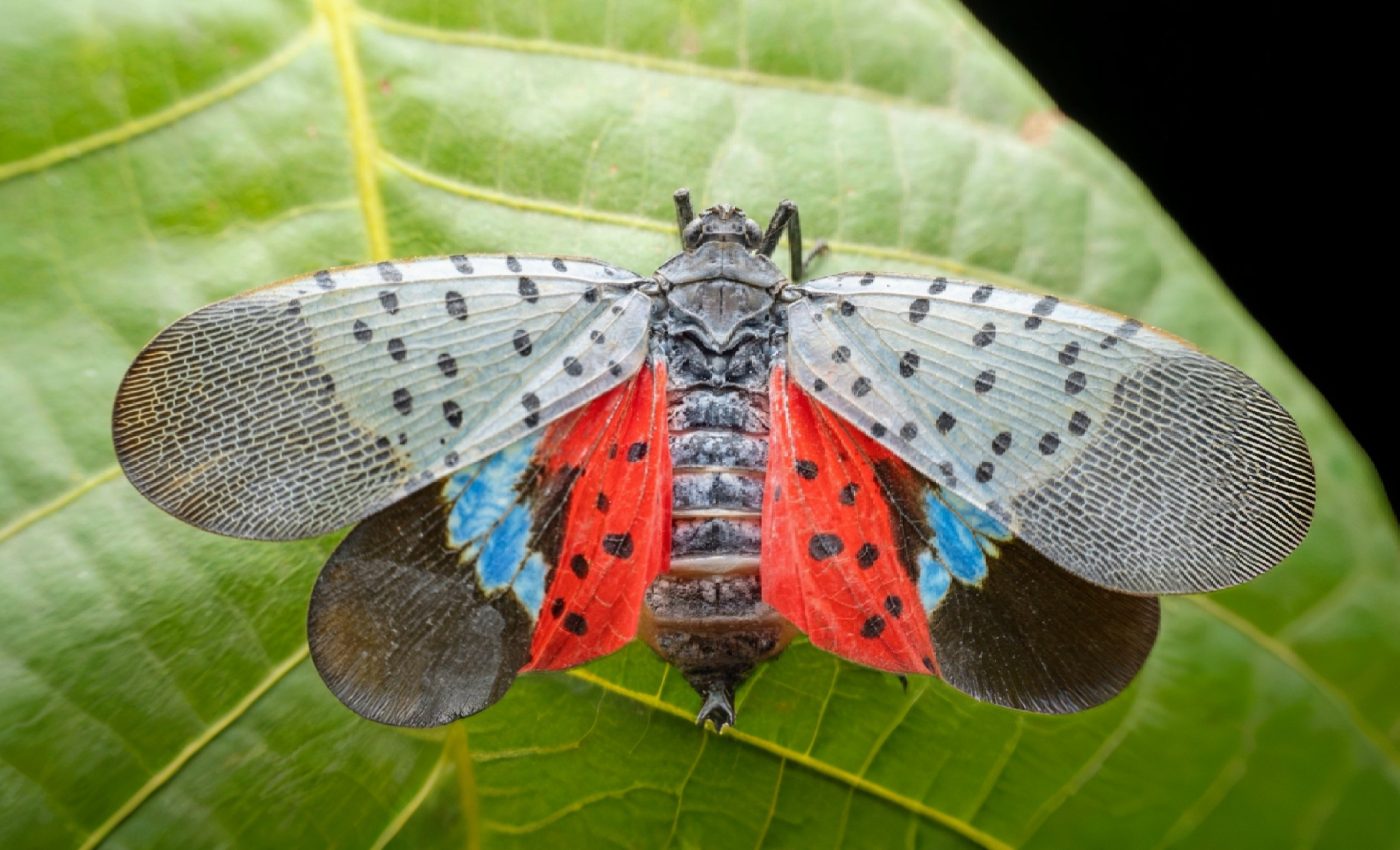
Lanternflies use a 'toxic shield' to avoid hungry birds
Spotted lanternflies can make themselves unappealing to birds, depending on what they eat.
New research shows that when these sap-sucking pests feed on the tree of heaven, they accumulate bitter compounds that make many songbirds think twice before eating them.
The study, conducted by entomologists from Penn State’s College of Agricultural Sciences, is the largest test to date of whether wild birds will eat lanternflies and how host plants shape that choice.
By pairing controlled rearing with field feeding trials, the team links diet to chemistry – and chemistry to avian decisions.
A pest that “seasons” itself
The spotted lanternfly (Lycorma delicatula) damages vineyards, orchards, and nursery crops across the eastern U.S. One of its favorite hosts is Ailanthus altissima – the tree of heaven – an invasive plant loaded with quassinoids, a family of intensely bitter compounds.
The researchers hypothesized that lanternflies feeding on Ailanthus would sequester these chemicals and become less palatable to birds.
“Like the spotted lanternfly, tree of heaven is an invasive species that originated in the same region of Asia as the insect,” said Johnson, who worked on the project under the guidance of co-author Kelli Hoover, professor of entomology.
“We found that birds, including nesting house wrens, preferred to eat spotted lanternflies that had not fed on tree of heaven, suggesting that the insects that consume this plant are less tasty, thereby providing some chemical defenses against avian predators.”
Testing birds’ bitter choices
To isolate diet effects, the team reared lanternflies from multiple life stages under controlled conditions: some had access to the tree of heaven, others never did.
Chemical profiling confirmed the expectation – quassinoids accumulated in lanternfly bodies, peaking in adults. With the chemistry nailed down, the question shifted to behavior: would birds care?
The researchers designed two complementary assays. First, they offered nesting house wrens a choice among live lanternflies from each diet group.
Second, they prepared suet cakes laced with chopped adult lanternflies. One batch contained Ailanthus-fed insects, while the other included insects raised without Ailanthus.
The team then monitored wild feeders, recording species visits and pecking preferences.
When birds say “no thanks”
Across both tests, birds showed consistent aversion to the “seasoned” insects. Common visitors – three woodpecker species, black-capped chickadees, white-breasted nuthatches, and Carolina wrens – pecked more at suet containing lanternflies that had not fed on the tree of heaven.
In the nest-box trials, wrens likewise chose the less bitter option more often and in larger amounts, especially when feeding chicks.
“We observed that of the immature spotted lanternflies that were used by house wrens, the parents often ate both spotted lanternflies reared with and without access to tree of heaven but only fed their chicks nymphs reared without access to the tree of heaven,” Johnson said.
“This could indicate that parent birds were less willing to tolerate quassinoids in spotted lanternfly prey for their offspring than they were for themselves.”
Bitterness passed to offspring
The deterrent signal didn’t stop with adults. Analyses detected quassinoids in lanternfly eggs, indicating maternal transfer of bitter compounds to the next generation.
That inheritance could blunt bird predation early in life, potentially boosting survival when nymphs are most vulnerable.
The researchers caution, however, that chemistry is only part of the picture. Bird species vary in tolerance for bitter or toxic prey, and hunger, season, and learning all influence choices.
In the field, predation still occurs – community science reports and prior observations document many bird species consuming lanternflies under some conditions.
When trees protect pests
If the tree of heaven makes lanternflies distasteful, landscapes rich in Ailanthus may inadvertently shelter the pest from avian pressure.
That could help explain why, despite frequent bird encounters, population knockdown by birds alone is often limited where Ailanthus is abundant. Conversely, in vineyards and orchards where lanternflies feed on other hosts, birds might be more willing helpers.
Understanding these plant–insect–predator links can sharpen integrated pest management.
Habitat work that removes or reduces Ailanthus could strip lanternflies of their chemical shield, increasing the odds that local birds engage as opportunistic predators.
At the same time, managers should avoid overrelying on birds in areas where lanternflies have ready access to bitter hosts.
Bugs and birds don’t agree
Birds aren’t the only predators. The team points out that some insect predators respond differently to lanternfly diet.
“Some insect predators show promise for this approach, as our previous research found that, unlike birds, they do not favor lanternflies that were raised on grapevines without ever feeding on tree of heaven,” Johnson said.
That divergence suggests mixed predator communities may provide more consistent pressure, even when birds balk at bitter prey.
Unraveling the taste puzzle
Taste-based avoidance is nuanced. Do birds learn to avoid “bad” lanternflies after single exposures, or do they sample repeatedly?
Which species tolerate quassinoids, and does tolerance rise when food is scarce? How does seasonality of host use shift palatability over the year?
The team also notes that quassinoid concentrations vary by life stage and diet history. Real-world mosaics of host plants could produce local pockets of palatable and unpalatable lanternflies.
Answering those questions could identify windows when birds are most effective and inform when to prioritize other controls such as traps, targeted insecticides, egg mass scraping, or classical biological control.
Lanternflies don’t just feed on the tree of heaven; they borrow its bitterness. By sequestering quassinoids, they become less appealing to many backyard birds, and parents feeding chicks are pickier still.
That dietary twist complicates the hope that native birds will naturally curb lanternfly booms – but it also offers a lever. Shift the host plant landscape, and you may shift the menu back in our favor.
The full study is published in the Journal of Chemical Ecology.
—–
Like what you read? Subscribe to our newsletter for engaging articles, exclusive content, and the latest updates.
Check us out on EarthSnap, a free app brought to you by Eric Ralls and Earth.com.
—–













